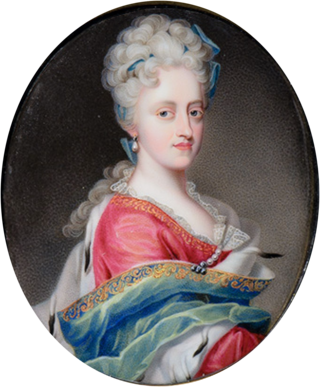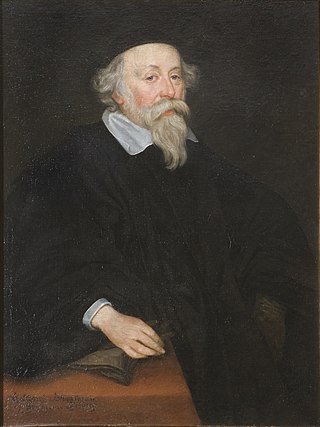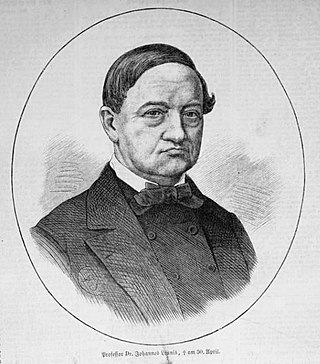
Heinrich Ernst Ferdinand Guericke, was a German theologian.

Neue Deutsche Biographie is a biographical reference work. It is the successor to the Allgemeine Deutsche Biographie. The 27 volumes published thus far cover more than 23,000 individuals and families who lived in the German language area (Sprachraum).

Heinrich Dernburg was a German jurist, professor, and politician. Born in Mainz, Grand Duchy of Hesse, he was the brother of Friedrich Dernburg and the maternal grandfather of the historian Heinrich Sproemberg.

Maria Magdalena of Austria was a governor of Tyrol and daughter of Leopold I, Holy Roman Emperor and his third wife Eleonor Magdalene of the Palatinate-Neuburg. She died unmarried.

Dietrich Georg von Kieser was a German physician born in Harburg.
Karl von Lützow was a German art historian and critic.

John Casimir, Count Palatine of Zweibrücken-Kleeburg was the son of John I, Count Palatine of Zweibrücken and his wife, Duchess Magdalene of Jülich-Cleves-Berg. He was married to Catherine of Sweden and was the founder of a branch of Wittelsbach Counts Palatine often called the Swedish line, because it gave rise to three subsequent kings of Sweden, but more commonly known as the Kleeburg line.

Johann Samuel Eduard d'Alton was a German anatomist born in Sankt Goar. He was the son of engraver Eduard Joseph d'Alton (1772–1840).

Friedrich von Müller was a German physician remembered for describing Müller's sign. He was the son of the head of the medical department in the hospital in Augsburg. He studied natural sciences in Munich and medicine in Munich, under Carl von Voit, and Würzburg. He was awarded his doctorate in Munich in 1882, and became assistant to Carl Jakob Adolf Christian Gerhardt in Würzburg and later Berlin. He was habilitated in internal medicine in 1888 and became professor of clinical propaedeutics and laryngology in Bonn. He moved to Breslau in 1890, Marburg in 1892, and Basel in 1899, before returning to Munich in 1902. His approach to clinical teaching and how to improve medical education were widely recognised and influenced medical education in the UK and USA.

Heinrich Ludwig Egmont Dorn was a German conductor, composer, teacher, and journalist. He was born in Königsberg, where he studied piano, singing, and composition. Later, he studied in Berlin with Ludwig Berger, Bernhard Klein, and Carl Friedrich Zelter. His first opera, Rolands Knappen, was produced in 1826, and was a success. Around this time, he became co-editor of the Berliner allgemeine Musikzeitung.

Johann Samuel Schröter was a German Protestant pastor since 1763, who was also a conchologist, mineralogist and palaeontologist. He was a member of the Academy of Sciences Leopoldina.
Karl Friedrich Eusebius Trahndorff was a German philosopher and theologian.

Alfred Kirchhoff was a German geographer and naturalist.

Georg Cracow, Kraków, Cracov, Cracau or Cracovius was a German lawyer and statesman.

Peter Franz Ignaz Deiters was a German lawyer and member of the 1848 Frankfurt Parliament.

Johannes Matthias Joseph Leunis was a German clergyman, naturalist and botanist. He was a co-founder of the Roemer Museum in Hildesheim.
Adolf Remane was a German zoologist who pioneered the study of the marine meiofauna. He was a director of the Zoological Institute of Kiel University, and a President of the German Zoological Society.

Cothenius Medal is a medal awarded by the German National Academy of Sciences Leopoldina for outstanding scientific achievement during the life of the awardee. The medal was created to honour Christian Andreas Cothenius, who was the personal physician to Frederick the Great. In 1743, Cothenius became a fellow of the Leopoldina, later president of the learned society that had been created by Emperor Leopold I. When Cothenius died, he left a sum of money in his will to the society with the condition that the interest on the money should be used to award a gold medal, every two years by answering a question in medicine whereby some new truth could be established. Up until 1864, the award came with a prize but was then converted into an award for the promotion of research over the whole period of a persons life. Each medal bears the Latin inscription "Praemium virtutis salutem mortalium provehentibus sancitum".
Johann Sigismund Gottfried Huth was professor for mathematics and physics.

Cothenius Medal awardees, 1864-1953 is a list of Cothenius Medal awardees for the period between 1864 and 1953.





















